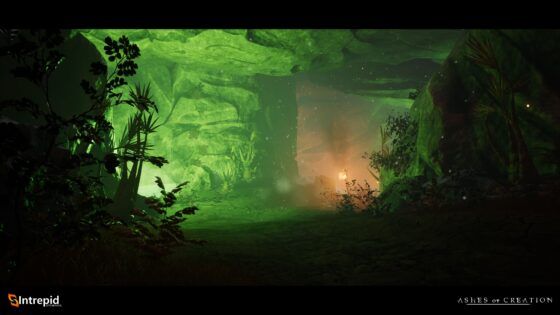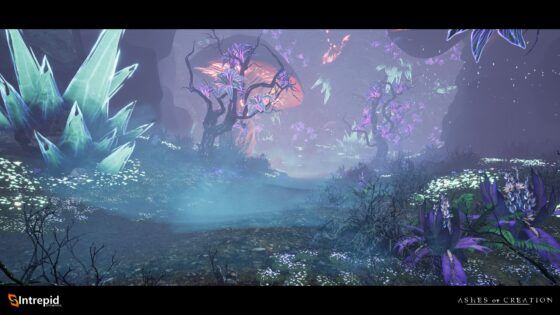No MMORPG really wants to be associated with the term “WoW Killer” – a would be king of the genre should rightly turn their nose up at that poisoned chalice and have its proponent thrown in the stockades. Having made such an association in the very title of this article, I’ll count myself fortunate not to live in the Middle Ages. I also count myself fortunate not to live in the Middle Ages as I then wouldn’t have electricity, a computer, or MMO games.
However, there is something unique about that game’s impact, influence and legacy that makes dethroning it the Holy Grail of MMORPG success.
Many other game genres depend on communities to make multiplayer worth playing, but none require it more than an MMORPG. It is almost certainly less interesting to play an FPS with a tiny player base but, if you can find 32 players, you can probably get a game going. If the large game world of an MMORPG has 32 players; well, then you may as well play a single player RPG with game mechanics oriented towards a solo experience. Otherwise, have fun tanking the dungeon boss with your glass-cannon mage.
WoW came along during the internet’s formative years. Game wikis were much less comprehensive, and players less likely to use them, forcing players to learn things about the game themselves, and to make slow progress through its vast world through cooperating and competing with other players. The part of the game that kept people coming back, its sense of community, was supported by a huge complex world for which solutions were not readily available.
Through the years, many MMORPGs have risen and fallen – replicating or improving on things that WoW did. Some were compelling because of the universes they offered (Warhammer Online or Star Wars: The Old Republic), some sought to make small improvements to the formula WoW has had such success with (Wildstar), while others took a more fundamentally different approach to core game mechanics (Guild Wars, Final Fantasy Online). No others have endured as long; no others have had a South Park episode made about them.
Longevity can no longer be achieved by having detail or scale alone, as information widely available on the internet will provide shortcuts to optimize and min-max. Games now need to be designed to evolve over time, and it seems that more than a few of the design choices of Ashes of Creation put this principle at the forefront. Whether it is able to create a “community” is really the million dollar question.

We had an opportunity to interact with the game during its Alpha One, and the game is showing a lot of promise. Combat is off to a good start, feeling impactful and somewhat tactical, even when noting the limited abilities offered in the Alpha One. Throwing out basic attacks on my mage's wand was actually among the more satisfying experiences I have had playing a spellcaster in an MMO, offering surprisingly attractive visuals and allowing a decent amount of movement.
The quests available didn’t offer too much beyond the standard fare, including kill X number of Y, or complete a patrol, or go and find our missing companions. No complaints here, and the quests feel pretty well calibrated in terms of not being too grindy. I felt interacting with NPCs to receive quests was quite open-ended and was a bit more engaging than just running between all the NPCs in a town with a marker above their head and immediately skipping all the text, though this may be a novelty that wears off.
The world itself was pretty attractive, if a little rough around the edges at times. Though it should go without saying that this is to be expected from an early Alpha. I was able to experience a satisfying variety of locales, ranging from hinterlands to tropical coastlines. There were also settlements at varying stages of development, including small camps, villages, larger towns and castles. This was only a small sample of the much larger world that will be on offer, but what I experienced so far made exploration satisfying and rewarding.
The Alpha One is at far too early of a stage to draw any major, decisive conclusions about the game, but it does provide confidence that a solid foundation is being established. With that in mind, here are some of the areas that we’re really looking to see proven in the coming months:
A Reactive World
Rather than having an entirely pre-built world, populated with villages, towns, and cities, the world of Ashes of Creation is populated with Nodes. Nodes determine where settlements can develop, but how these settlements develop is determined by players. Players will contribute directly to the growth of the settlement from camp to metropolis, while the aesthetic and productive focus of the city will be determined by the race that settles the Node first. Crucially, nodes can be completely destroyed through PVP combat, meaning that the world can constantly evolve.
Combat Variety
Some MMORPGs, including WoW have utilized “tab-targeting” whereby once a target is locked, the player pushes a button to deal damage. Assuming the player is in range and has sight, the attack plays out through an animation. The alternative is “action combat”, whereby an attack will deal damage if an enemy is in its area of effect – i.e., if you swing your sword in a large arc in front of you, and an enemy occupies the same space, it will deal damage. A few games have produced alterations of this formula, but Ashes of Creation presents both tab-targeting and action combat in its range of classes, offering playstyles to suit every player, including hybrid options utilizing aspects of both combat systems. MMORPGs include a lot of combat, so providing these options reduces the chance of alienating a large potential playerbase.
Dungeons in the Open World
80% of Ashes of Creation’s dungeons are in the open world, unlike most MMORPGs which take players to separate, “instanced” versions of dungeons. The logic is that this will increase the interaction of players in either a cooperative or combative way, encouraging people to work together to defend contested zones where dungeons exist
Consideration to Hardcore and Casual players
The game includes both vertical and horizontal progression, this means that your character can progress vertically in power and levels, and horizontally by diversifying skills and weapons to suit certain situations better – for example, by making a weapon deal a certain damage type. In theory, the society and religion that your character is part of will provide depth for hardcore players, which is more optional for the casual player. The game also aims to ensure that characters of all levels can meaningfully participate in multiplayer events such as sieges by providing a range of roles such as manning siege weapons, buffing allies and repairing fortifications.
A Home Away from Home
You can acquire an instanced apartment, a freehold in the open world, or a static house in a settlement node. What better way to keep players engaged than the prospect of real estate, property taxes, and the zen-like calm of decorating a virtual space to feel like home. This of course has the secondary effect of making you extremely motivated to protect that home from marauding enemies, providing a natural incentive to help contribute to your faction’s success.

A Promising Business Model
If a game releases as free-to-play, you have to ask yourself how much fun you’ll have without paying money. A free-to-play game needs mechanics to force you to pay money, and how much can you really relax in a virtual world if you’ve one eye to your wallet the whole time. Similarly, a game with no ongoing income sounds like a bit of a risk for continued development. Expansion packs are a thing, but so are planned expansion packs that never release due to a game’s declining popularity. Ashes of Creation is a game with no upfront box cost, but with subscription fees and a cosmetic store. Subscription hopefully means ongoing development and low upfront costs to try out the game to get as many players in as possible. The cosmetic store is fine by me if it genuinely feels optional – we’ll have to wait and see on that one.
Any many more…
We’ve not even touched on the many classes, races, combat mechanics, crafting mechanics, progression systems, loot, levelling and more that will likely provide their own incentives for people to take an interest in Ashes of Creation. Though we'll be sure to provide in depth looks at these as development progresses. That said, a few strong early indications have certainly piqued our interest, suggesting some great game design elements that have the potential to make Ashes of Creation a really standout experience.
As with anything worth getting excited about, we should temper our expectations. Ashes of Creation is in Alpha One, and while there are many promising signs the reality is that balancing all of the intended mechanics to make them rewarding, engaging and enduring will only really be tested when actual players begin to inhabit the world.
Nevertheless, this cup, grail or chalice is filled with some of the most enticing wine I’ve encountered in a long time. No time to worry if its laced with arsenic – bottoms up!
Ashes of Creation is in it's Alpha One and the final product will undoubtedly be a vastly different and enhanced beast from the one we've experienced. The no-NDA alpha evidences Intrepid Studios' commitment to taking on meaningful fan feedback and improvement.
MMOGames.com is committed to bringing you all the freshest, funniest, and most insightful MMOGames news and content. If you enjoyed this recap, share it with your community. And make sure that you never miss our updates and exclusive giveaways by following and favoriting us on Instagram, Twitter, and Facebook.